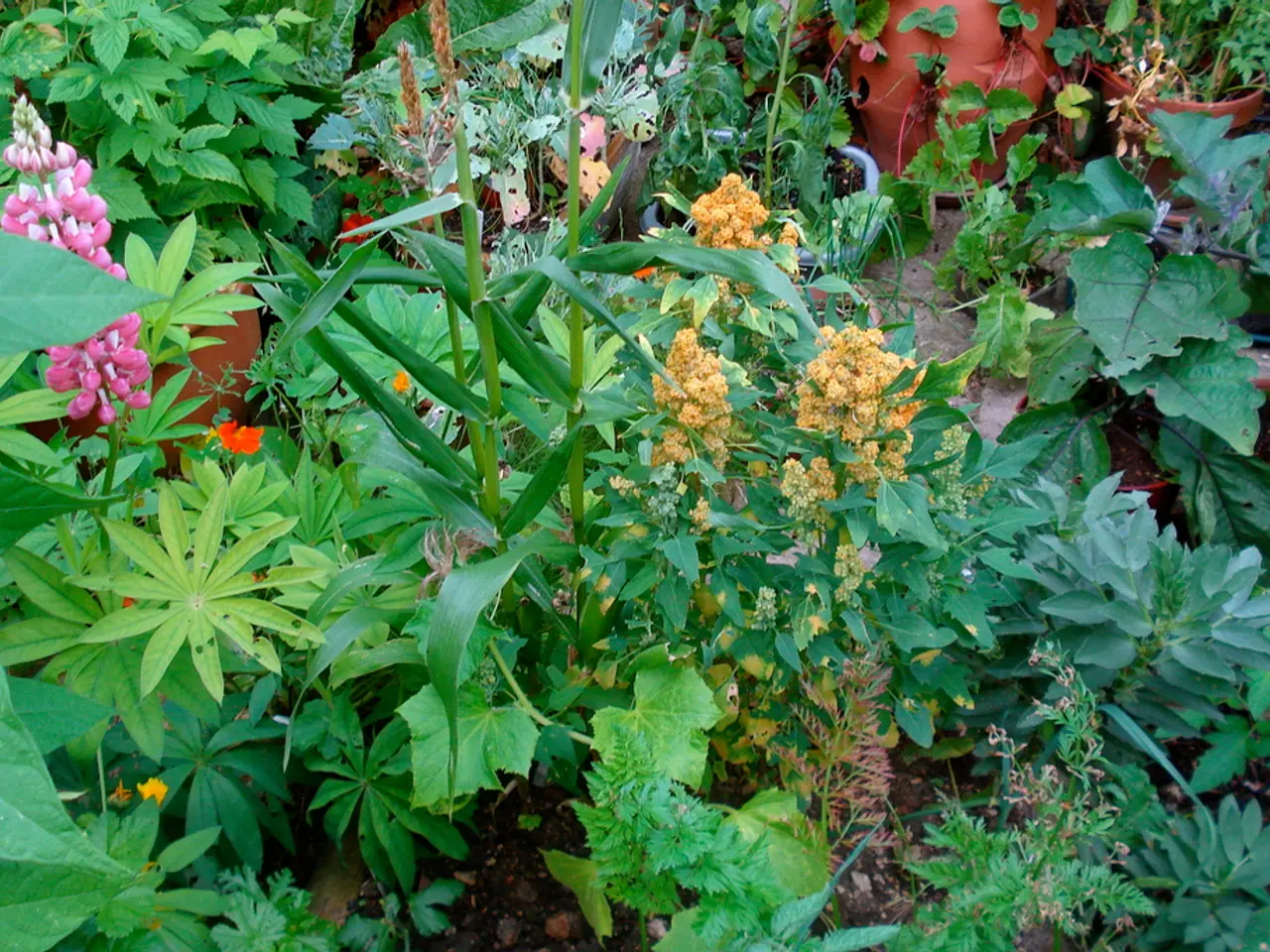Harvesting crops from your autumnal greenhouse
As the autumn leaves fall and temperatures drop, it's time to prepare your greenhouse for the colder months ahead. Here's how to maintain a warm, healthy environment for your plants, enabling them to thrive even in freezing conditions.
**Maintaining Greenhouse Temperature in Winter**
1. **Supplemental Heating**: Install heating systems such as electric plant heaters, gas heaters, propane heaters, or solar heaters to maintain stable temperatures during cold months. For small greenhouses, space heaters combined with thermal mass can be effective; larger greenhouses might require more robust solutions like radiant heat systems.
2. **Thermal Mass**: Place heat-retaining materials such as water barrels painted black or concrete slabs with dark aggregates inside the greenhouse. These absorb heat during the day and slowly release it at night, moderating temperature fluctuations.
3. **Insulation and Heat Retention**: Use insulation materials like bubble wrap, Reflectix insulation, or straw bales on walls and glazing to minimize heat loss. Cover plants with frost cloths or horticultural fleece to provide several degrees of frost protection while allowing air and moisture exchange, preventing frost damage.
4. **Smart Ventilation**: Proper ventilation prevents humidity buildup and fungal diseases. Use roof vents, side vents, and automated vent openers that adjust based on temperature. Passive ventilation architecture can circulate air naturally, reducing the need for mechanical systems.
5. **Watering Practices**: Water plants early in the day with lukewarm water to help roots absorb moisture before temperatures drop at night, avoiding cold shock and root rot.
**Best Greenhouse Accessories for Winter**
- **Greenhouse Heaters**: Electric, gas, or propane heaters designed for plant environments provide controlled warmth. - **Heat Mats**: Propagation heat mats offer bottom heat for seed starting or young plants, ensuring root zone warmth. - **Thermal Mass Elements**: Water barrels, concrete floors with dark aggregates, or stone pathways act as heat batteries to extend growing seasons and stabilize temperatures. - **Insulation Materials**: Bubble wrap, Reflectix insulation, frost cloths, and straw bales help retain heat and prevent cold air infiltration. - **Automatic Vent Openers**: These devices regulate ventilation based on temperature, ensuring optimal airflow without manual intervention. - **Frost Cloths or Horticultural Fleece**: Lightweight protective covers that shield plants from frost while allowing breathability.
By combining these methods and accessories—efficient heating, strategic thermal mass use, thorough insulation, proper ventilation, and protective coverings—you can maintain a warm, healthy greenhouse environment throughout winter, enabling plant growth even in freezing conditions.
**Growing Winter Salads and More**
Greenhouses can be used to grow hardy crops such as salads and herbs all winter. The main concern when growing winter salads in a greenhouse is ensuring the plants receive plenty of light due to low natural light levels in winter. Peaches and nectarines can be kept disease-free from peach leaf curl fungus by planting them in the border of a cold greenhouse in autumn or growing them in pots kept under cover between October and late March.
Spring bulbs should be potted up in autumn, stood outside for six weeks, then brought into the greenhouse to encourage early blooms. The extra protection provided by a cold greenhouse keeps these plants alive and requires watering sparingly. When buds appear on spring bulbs in the greenhouse, the pots can be taken into the house to enjoy the display.
A rhubarb crown can be lifted in autumn and left on the soil surface to survive frost. Bring it into the greenhouse in late December and cover with a large tub to exclude light. Multiple pots of each herb should be planted for a continuous supply of harvesting. Many summer bedding plants, such as fuchsias, marguerites, and pelargoniums, can be overwintered in a cold greenhouse.
Alpines benefit from protection during wet weather and should be brought indoors over winter, then moved outside again once the flowers fade. Tulips, daffodils, and hyacinths can be potted up in autumn and brought into the greenhouse to encourage early blooms.
Removing shading material and cleaning the glass in a greenhouse can maximize available light. Keeping your greenhouse clean and well-ventilated will help ensure a productive winter growing season.
In addition to preserving the greenhouse temperature for the colder months, you can also enhance your home-and-garden lifestyle by growing winter salads and herbs. By placing rhubarb crowns on the soil surface to survive frost and bringing them into the greenhouse in late December, you'll enjoy a fresh crop during the winter. Moreover, for a continuous supply of various herbs, it's beneficial to have multiple pots planted. Not just that, many summer bedding plants, such as fuchsias, marguerites, and pelargoniums, can be overwintered in a cold greenhouse, extending your gardening season into the winter months.





